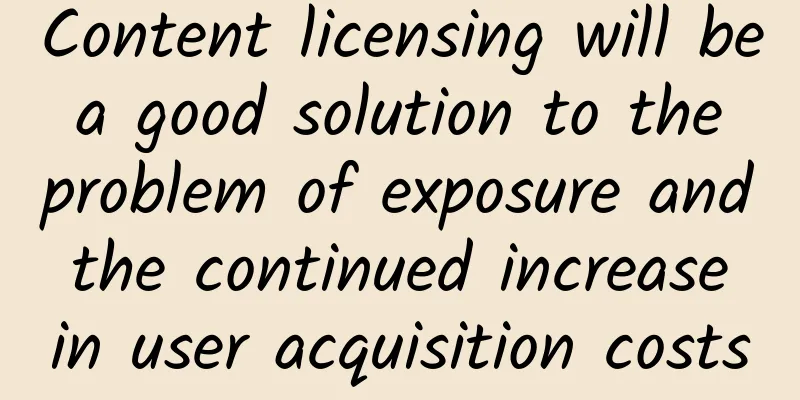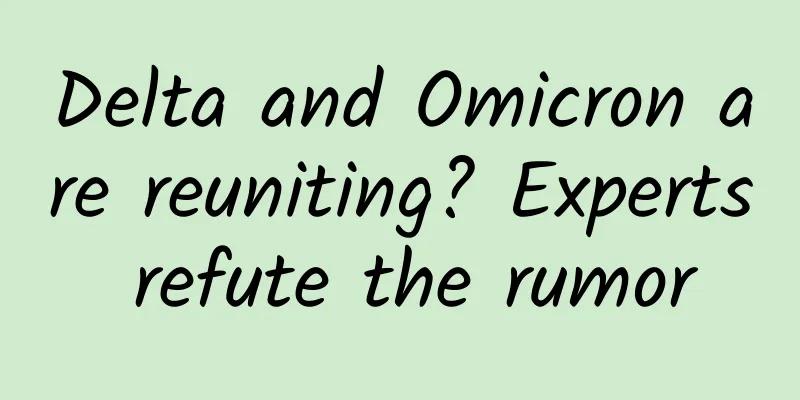Content licensing will be a good solution to the problem of exposure and the continued increase in user acquisition costs

|
As the mobile app market rapidly expands and becomes increasingly crowded, it’s becoming increasingly difficult for publishers and developers to gain exposure. Creating a good game, or even a great game, is no longer enough to make your app stand out. Even some well-reviewed games are largely ignored by consumers. User acquisition costs soar The discovery problem is steadily increasing. In March, Xylogic found that there were 31,000 new iPhone apps and more than 22,000 new Android apps in the US App Store alone. Marketing and advertising costs have also risen, making it more difficult for smaller developers to acquire new users (some can’t even afford these costs). Developers have done what they can to increase revenue by improving conversion, retention and monetization rates. But this is challenging in itself, because as long as the cost of user acquisition and exposure continues to rise, their efforts will always be considered in terms of the impact of costs on profits. According to the FIKSU Cost Per Loyal User Index, the average marketing expenditure per user has increased from 94 cents in March 2011 to $1.36 in March this year, a full increase of 45%. If the installation cost of a free game is $1.36 and the conversion rate of the game is 2.5% (the average conversion rate calculated according to SuperData Research), this means that the acquisition cost per paying user (ACPPU) is $54.4. Therefore, in order to break even on the user acquisition expenses, the game must achieve an ARPPU of $54.4. According to SuperData's data from last year, the average US paid social game player spent $37.59 per person. After deducting the 30% commission paid to Google or Apple, developers only have $26.31 left. Compared with the expenditure of $54.4, the developer lost $28.09. (Even if you double the conversion rate to 5% and control the user acquisition cost to $1.36, the result is still a loss). In short, the increase in mobile game distribution and the continued rise in user acquisition costs have made discovery the most difficult issue for mobile games. This creates a new role for content licensing, which was previously a misunderstood and expensive model. By licensing content, mobile games can solve the problem of discoverability and significantly save on user acquisition costs. It’s time to pay attention to content licensing One way mobile developers and publishers can increase game exposure and reduce user acquisition costs is to use well-known, recognized IP, characters, stories, and brand licenses such as movies and TV anime, which can bring instant attention and reviews. The history of licensed games is not optimistic. Players and industry insiders are all familiar with bad games that used popular licenses, which in turn affected the original brand, and some game developers had to delay the license processing time, so the final product might be a third-rate application. Or it might be a publicity stunt to cater to the release of a movie. Everyone has their favorite licenses, such as Family Guy: Black To The Multiverse and Enter The Matrix, ET, Catwoman, etc. However, famous IPs will always have a certain number of fans, no matter how bad the game was. In short, popular licensed content is not an excuse to make a bad game. There is no reason to do so. If you have a good game and conversion rate, then the operation and retention rate should be high, so the licensed content can guarantee marketing expenses to a certain extent, and this money can be used to solve the exposure problem. Exposure Popular licenses bring many benefits, such as a ready-made fan base (including non-players) and greater appeal. You can use the licensed logo and keywords, which can make people who see the app immediately have an impression. PR is also easier because the franchise itself is already popular. If the licensor is a movie studio or TV company, using existing marketing channels to help market the franchise will be more effective. Even if potential players don't know your PR, Google Play and Apple App Store will put you in the recommended position, so exposure is no longer an issue, and a popular license will always be more competitive than a brand new unfamiliar name. Well-known IP is one of the important factors to get promotion position in the app store. Promotion in the App Store or Google Play is the best way to increase the exposure of the app (according to industry observers, about 100,000 free users are added every day). Licensed content can also help improve retention and operations. A well-planned licensed game is very worthwhile to produce, as the plot and characters are relatively familiar and meaningful to players, and the loyalty and return rate of players are relatively high. IAPs for virtual items are just like prizes. If the item design matches the brand recognition, it will be more attractive. Players will be more willing to spend money on an item they are familiar with, rather than paying for it without knowing it. Managing user acquisition costs It is often believed that licensing popular content for gaming is expensive, either for use in games or as a piece of content (such as selling branded virtual items), but this is not true. Licensing agreements often include a sales loyalty fee, or some sort of revenue sharing agreement. This is just a small security deposit. Different licensors may require different minimums. But the most important thing is whether the licensor recognizes its prospects and believes that the licensed developer can make good games. In this way, even some small developers and publishers can buy the license of popular IP. Currently, developers realize that licensing is a good thing, but there are not many licenses for mobile applications. This situation may change soon. Since loyalty is based on actual sales, rather than just reviews, clicks or free installs, the impact on user acquisition costs is huge. Assuming the cost per install (CPI) is $1, the publisher needs to spend 200,000 to get the corresponding number of downloads. If the conversion rate is good and reaches 5%, then 10,000 people will choose to pay, and the acquisition cost of each paying user (ACPPU) is $20. Assuming a healthy $40 in net revenue per user, $200,000 in expenses would bring in $400,000 in revenue, for a profit of $200,000. Instead of spending $200,000 (mostly up front) to get $400,000 in revenue, licensing might only cost you $50,000 total, and you might only have to pay about $10,000 up front. Of course, it would be wrong to think that using licenses can completely (or even largely) replace user acquisition budgets, but there is no doubt that popular licenses are more efficient in terms of marketing and user acquisition, leading to better PR, app store promotion or more powerful virtual growth methods. Authorization Guide These data are very tempting, but not all authorizations have such a great influence, you need to find a good authorization. However, one benefit of licensing is that it can have more influence on target players related to the licensing, which is difficult to achieve with a brand new game. Another issue is finding the right licensor and negotiating a good deal, both of which are difficult to accomplish if you don’t know what you are doing. Developers should always be careful to both obtain a good license and negotiate the right terms, otherwise, they will either not be able to recover their costs or not be able to buy the license. Types of good authorization There are many types of authorizations that can be made. Some are new IPs (like upcoming movies), others are existing IPs (current and past) New IPs may look great, but they are usually riskier and more expensive to license than old IPs. Even if the developer knows that a new movie may be a big hit, it may fail as a game (unlike existing IPs, it is difficult to do market research on new IPs). Developers and distributors should keep in mind that Hollywood studios always like to exaggerate new movies in order to obtain more commercial authorization before the release. Therefore, for the authorization of new IP, the details of the transaction need to be negotiated carefully, otherwise the risks are unpredictable. Good PR and advertising effects are only one of the main benefits of licensing. What the licensor does is the most important part. IP licensing always requires the licensor to be responsible for marketing activities, from print media PR, official website promotion, to social media activities, etc. Game developers and publishers can also negotiate marketing involvement with licensors, which can take different approaches, but a common approach is for the licensor to agree to provide a specific marketing budget for user acquisition. Working with licensors Developers need to remember that brand owners want to protect the quality and integrity of their content. On the other hand, licensors may have different views than developers, so it is important to ensure that both parties are on the same page. Here are some questions to consider: Will this licensor work well with the developer or publisher? You can identify the right licensor through existing and previous authorizations. The licensor may want to be more involved in the creative process, while the developer may not necessarily want to be interfered with too much. If handled properly, it can lead to great results, but if not, the licensing agreement may be a disaster. Some licensors have an extremely slow review process, and developers or publishers need to avoid waiting in vain. The written agreement should clearly outline issues such as time frames. The gaming industry has inevitably changed due to the competition for users among different products. Even if developers can maintain their retention rates and operational techniques to increase revenue per user, the numerous new game releases make user acquisition and discovery increasingly difficult. The licensing of well-known content has a great influence, not only can it increase the studio's visibility, but also can reduce user acquisition costs. If the licensing and agreement are appropriate, the problem of exposure and user acquisition costs will be solved. Source: gamelook Original link: //www.gamelook.com.cn/2013/05/118203 |
<<: Data Analysis: Global Online Consumers and Multi-Screen Media – Infographic
Recommend
What to do if you take cough medicine during pregnancy
As we all know, you cannot take medicine casually...
What should I do if I have stomach pain and excessive vaginal discharge?
Many women always have abdominal pain in their li...
What should pregnant women do if they have severe anal prolapse?
Rectal prolapse in pregnant women should be taken...
What are the three measurements of women?
When girls have a physical examination, they usua...
What is the normal SD value at 30 weeks of pregnancy?
The umbilical artery SD ratio is mainly used to r...
Normal pregnancy months
Every woman has experienced pregnancy, which is a...
Why do you have back pain when you are eight months pregnant and what should you do?
Being a mother is the best but also the hardest j...
Precautions after ovarian cyst puncture
Ovarian cyst is a common gynecological disease, a...
Disadvantages of long-term drinking of soy milk for women
The benefits of drinking soy milk for women have ...
What are the effective ways to slim down your thighs?
Many of us work hard for our figure and beautiful...
What medicine should women take for urinary tract infection
Ninety-five percent of urinary tract infections a...
Does menstruation affect Chinese medicine pulse diagnosis?
When treating a patient, a Chinese medicine docto...
What is a daffodil? How to distinguish between a daffodil and an orchid
Daffodils are regarded as a symbol of good luck. ...
What's wrong with my period being brown?
Generally speaking, as long as a woman's body...









